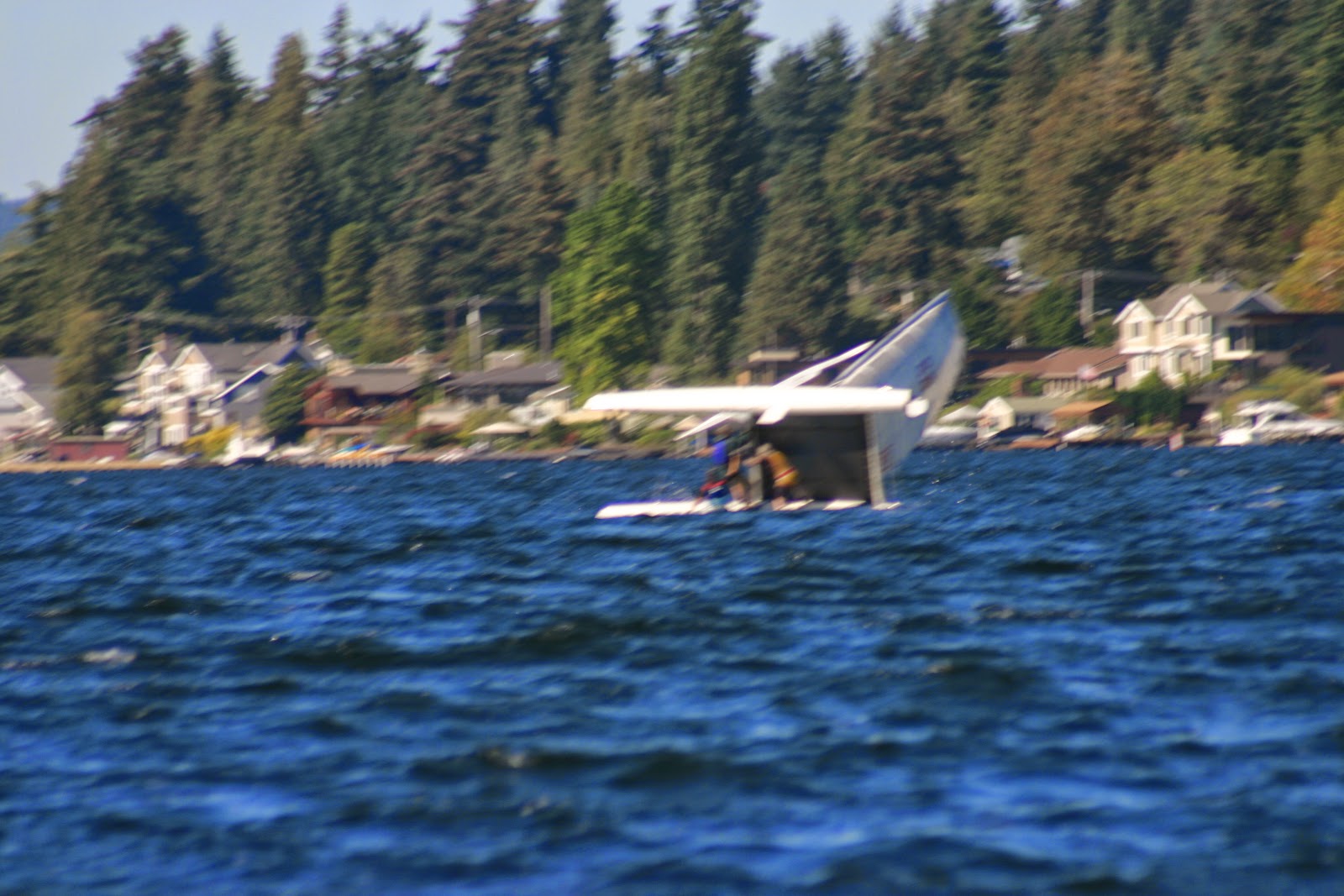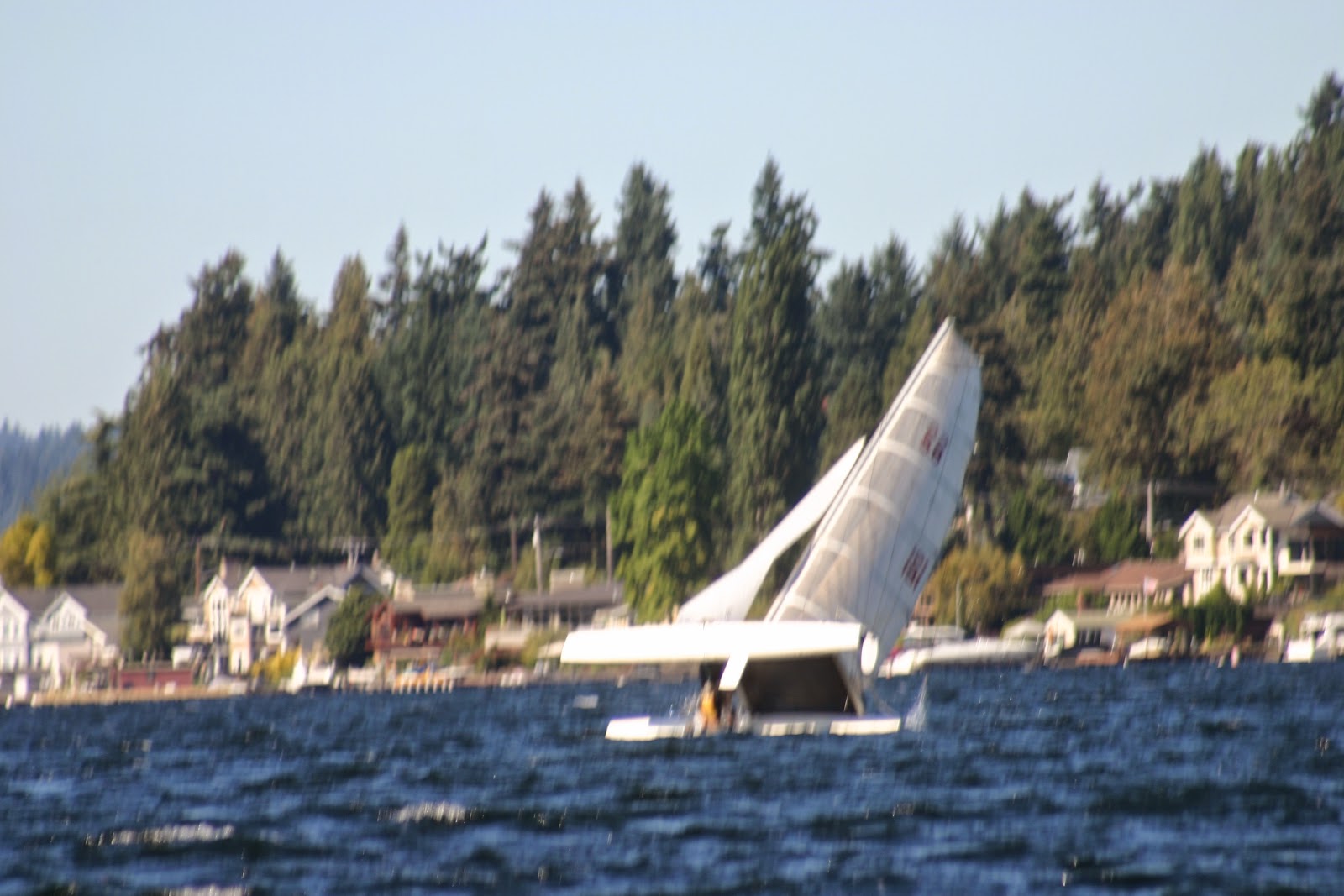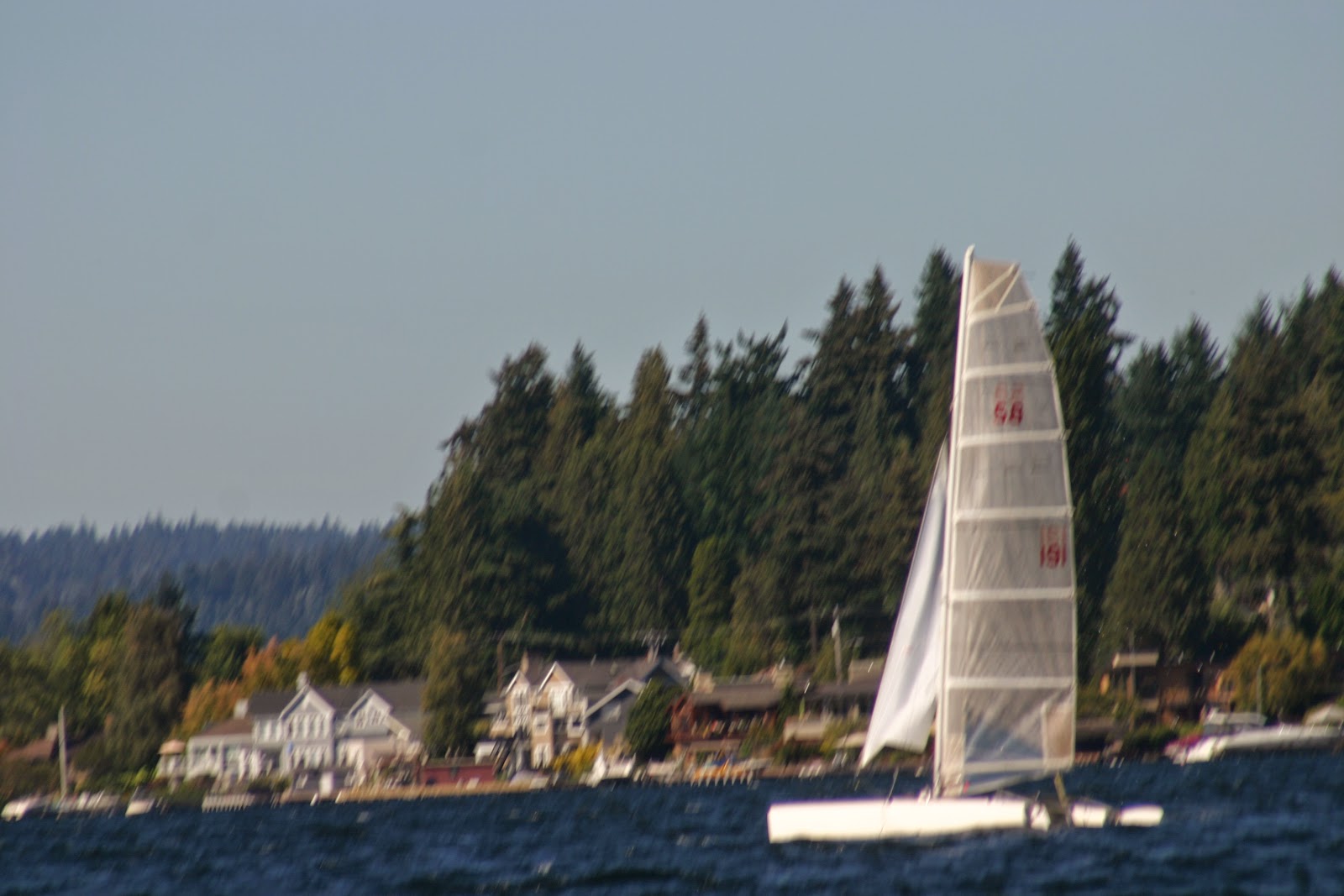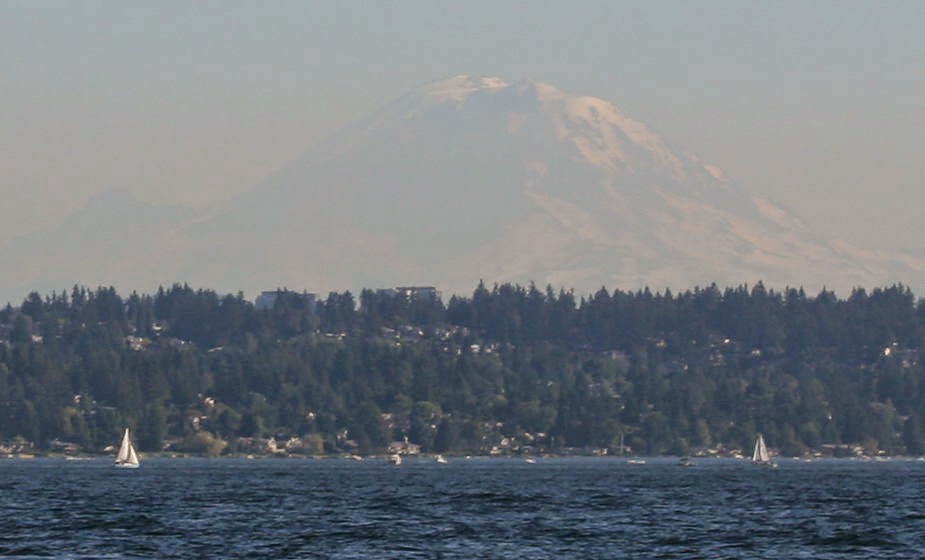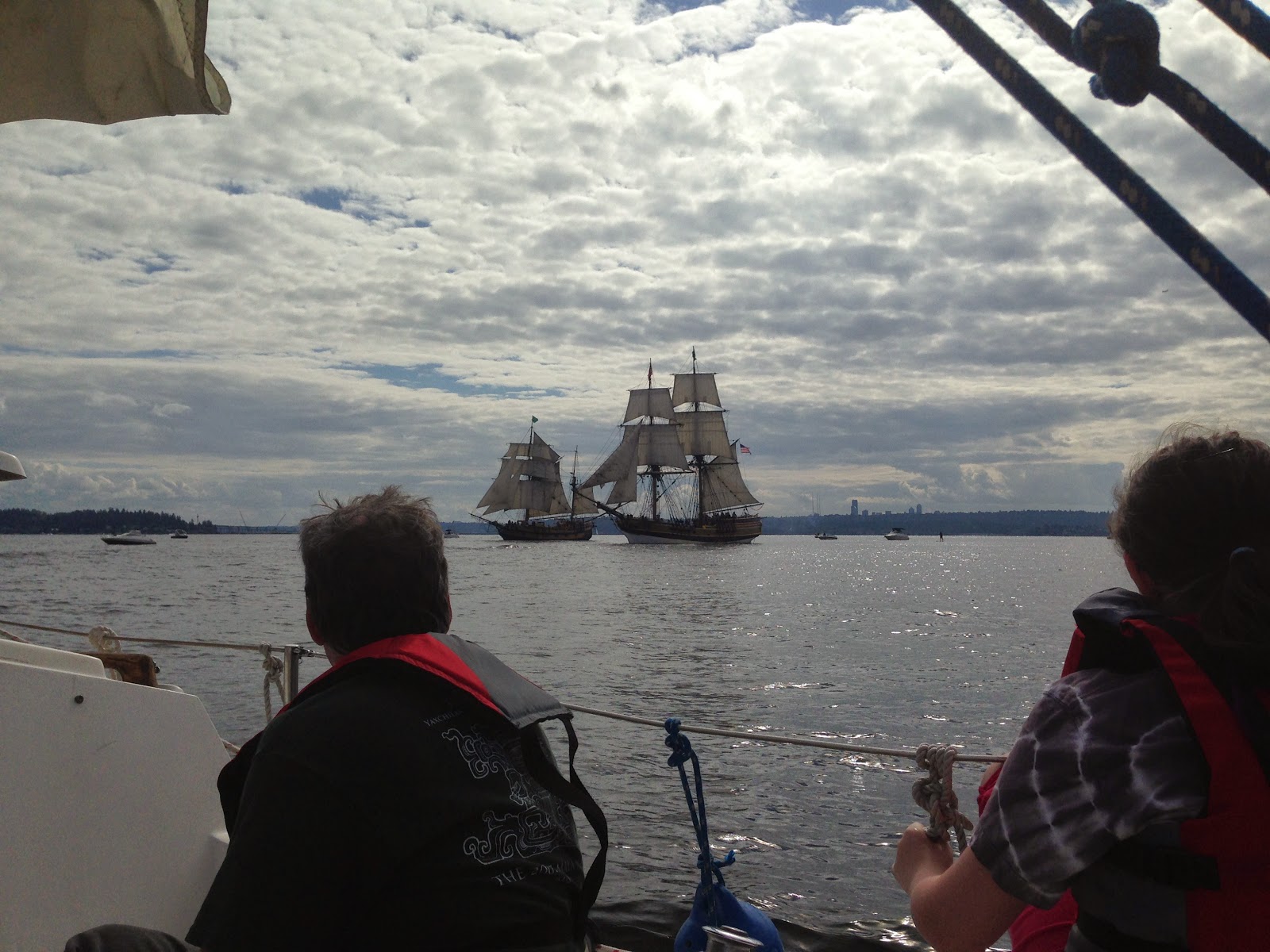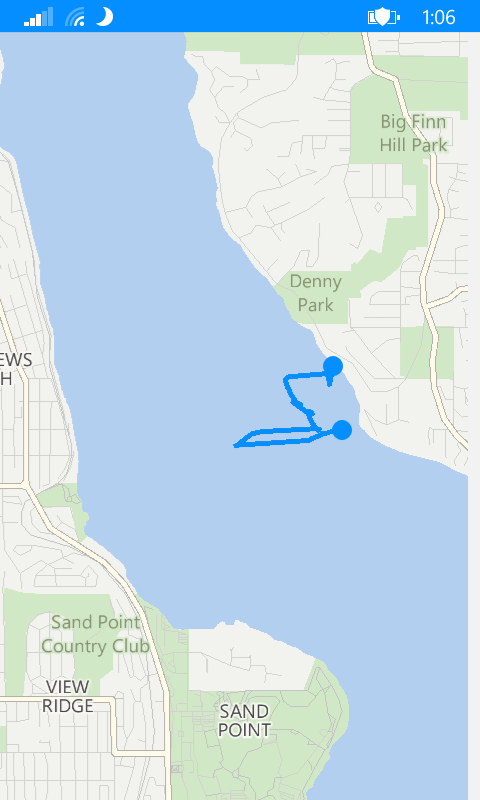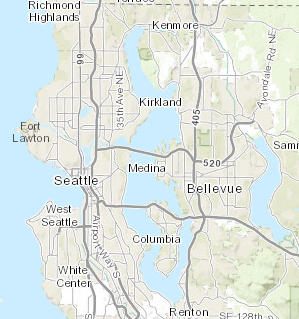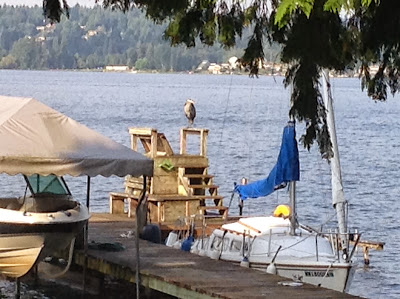
|
|
Great Blue Heron guarding Fantasia
|
We picked up Greg's parents for a sail and brunch. We arrived at Fantasia to
find it guarded by a Great Blue Heron. It reluctantly decided that its
services were no longer needed when we started putting stuff on the boat.
We headed out to sea about 9 a.m. Our normal routine is that Greg first drops
the swing keel, then mans the outboard, keeping the boat headed directly into
the wind. Sandi removes the sail cover and gear ties holding the sail. Conner
then hoists the mainsail. Sandi then takes her place back at the tiller and
after getting turned to catch the wind, unfurls the jib.
We then sailed south toward Kirkland. However, the winds were light, so we
were still quite some distance away with our 11 a.m. brunch reservation coming
up. We dropped the mainsail again, furled the jib, and motored the rest of the
way. We tied up to the
Beach House Bar & Grill's
dock and headed in for brunch. We had our fill of breakfast burrito, pecan
french toast, pancakes, and beachhouse scramble, all very good.

|
|
Fantasia tied up to the Beach House Bar & Grill dock
|
We then headed back out and took a leisurely sail north going back and forth
across the lake. At one point we paralleled a Catalina 27, which unfortunately
didn't have any easily visible name or sail number. I'm sure we were a pretty
sight from the shore.
The weather got to the high 70s. The winds were light in the morning, but
picked up a bit in the afternoon. A beautiful day for sailing.
We pulled back into the dock about 4:30 p.m. We've got the docking routine
down. We tied up in a new way though, as there is now a fourth point to tie up
to. This recently got repaired, giving us this new option. The fourth line
keeps Fantasia away from the dock, which lessens the wear and tear on both the
boat and the dock caused by the boat wakes and the wind bouncing the boat
around. We need the keel up as our moorage is fairly shallow in places.
Without the keel down, the boat rocks quite a bit in the elements.
The
Dock Edge 3/8-7/16-Inch Snubbers that we bought are working out great. The snubbers take up the tension when
the boat rocks rather than yanking on the cleats on the dock or boat. The
rubber expands and contracts, giving a gentle play on the line as the boat
moves. When you put the snubber on the docking line, it should be placed as
close to the boat side of the line as you can. Our lines have a pre-spliced
loop at the end, and the splice is too thick to go through the snubber, so we
have to place the snubber just a little further down the line after the
splice.
that we bought are working out great. The snubbers take up the tension when
the boat rocks rather than yanking on the cleats on the dock or boat. The
rubber expands and contracts, giving a gentle play on the line as the boat
moves. When you put the snubber on the docking line, it should be placed as
close to the boat side of the line as you can. Our lines have a pre-spliced
loop at the end, and the splice is too thick to go through the snubber, so we
have to place the snubber just a little further down the line after the
splice.
Greg worked some more on the wiring up the new panel. We finally figured out
that the wiring diagram in the Catalina 22 Owner's Manual does not match the
wiring on Fantasia. On Fantasia, the return is a black wire, and the steaming
light is a white wire, whereas these are reversed in the Catalina manual
diagram. We are not sure if we have the original wiring that is just odd or if
it has been changed by one of the previous owners.
The steaming light on the mast is either burned out, or there is a bad or
corroded connection somewhere. If the bulb is burned out, we will replace it
in the off season when the mast is down. We do not expect to be motoring after
dark between now and then.
The
West Marine six circuit electrical panel
is a fine replacement for the Catalina original panel. It is much cleaner with
positive and negative bars built in. When we get all the wiring perfect, we'll
write up a page on the complete upgrade.
We confirmed that the VHF radio works. As we suspected might happen, the two
entries of a MMSI into the radio had already been exhausted, so it will need
to be shipped back to Standard Horizon for a reset. The FCC does not allow end
users of VHF radios to make multiple changes of MMSI numbers. This prevents
the glutting of the MMSI database with tons of obsolete information. It also
prevents malicious attacks on the DSC automated Mayday system.




